The Foot Clinic run by Dr. Noor Janahi, Senior Podiatrist – Foot and ankle specialist, is a specialized clinic for the diagnosis and treatment of your foot and ankle complaints, providing comprehensive diagnosis and treatment plan, using the most up to date advancement in foot and ankle techniques.
What is Podiatry (Foot Medicine)?
Podiatry is a branch of medicine specialized in treating disorders and injuries of the foot and ankle while administering preventative health measures aiming at maintaining active ambulation within all ages including the senior citizens. The podiatry care that is provided at our clinics will include diagnosing, treating and prescribing for any disease, injury, deformity, or problems of the foot and ankle using the very latest advancements in foot and ankle techniques. With an unrivalled focus on patient care, the processes of consultation, diagnosis, treatment and post-procedure care are all performed at the clinic by Dr. Noor Janahi and her exceptional staff.

Podiatry Clinical Expertise & Services Offered include:

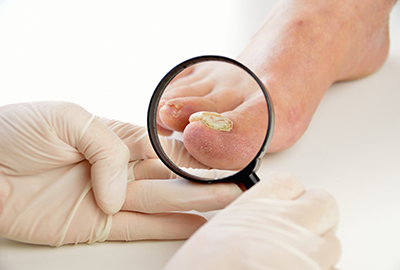
Nail disorders are very common and can be a source of discomfort to our patients. This can range from painful ingrown toenails, to thickened nails, to infections caused by different microorganisms.
Ingrown toe nails are one of the most common conditions treated by Podiatrists. Ingrown toenail is caused by toe nails that grow inside the skin either as a result of trauma or poor nail cutting. Some people have naturally wide or curved nails that are predisposed to developing ingrown toenail problems.
An ingrown toenail can often become infected with extra tissue growth around the toe nail as the body tries to fight the foreign body penetrating the skin. This is known as hyper-granulation tissue. Pus, discharge and redness results due to infection and antibiotics may be needed as treatment as well as removing the ingrown nail if it persists.
Ingrown toenail can be treated either conservatively or surgically depending on the severity of the problem. The most common procedure performed for ingrown toe nails involves the removal of wedges from the side of the nail. Phenol, a chemical, is then applied so that the nail is permanently narrowed. This operation leaves no scar (in the absence of complications which are rare) and a perfectly normal looking nail.
Other Nail problems are those associated with infection or thickened nails. At our Foot Clinics we have the latest technologies to reduce the thickness of the nails, and provide treatment for different types of infections associated with the nail or nail bed.

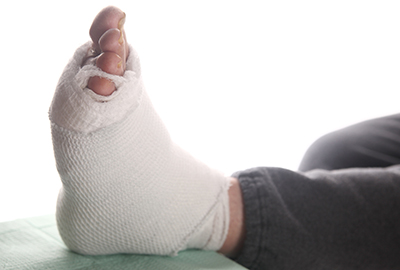
The Foot in Diabetes
The foot is especially affected by diabetes because:
As a consequence of these factors a number of things can go wrong:
Our Diabetic Foot Services will consist of:

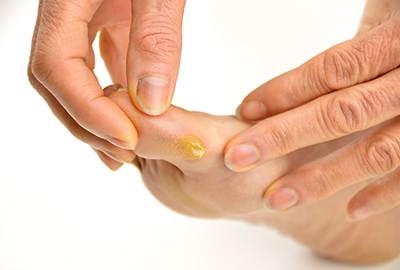
Corn and Calluses can lead to pain while walking.
Corns are areas of hard skin caused by prominent bony lumps and bumps, often in association with claw and hammer toe deformities. Corns and calluses can be reduced conservatively without surgery. In some cases however corns can be permanently removed with excellent cosmetic and symptomatic results.

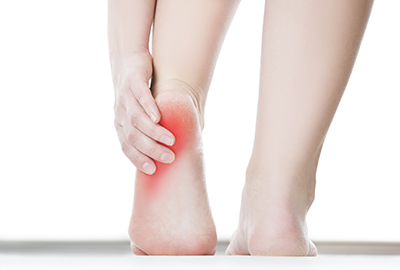
Foot pain is one of the most common problems seen in our clinic. This can range from mild to severe, and can be present in different parts of the foot.
Heel pain
10% of the adult population suffers from heel pain at some point in their life. Whilst there are many causes, examples of the most common conditions are shown here.
Plantar fasciitis is a strain of the ligament under the foot that caused inflammation and pain. This inflammation can lead to the development of heel spur (bony growth in the heel)
The condition is treated by correcting the biomechanical issue causing the problem, often after biomechanical and gait analysis. Most patients get better with conservative treatment using advanced orthoses and many other treatment strategies. Invasive treatments including techniques such as injections and shock wave therapy are sometimes required. Rarely, surgery is needed.
Stress fracture
Excessive activity on specific bones can lead to the development of a stress fracture which can lead to a proper fracture if left untreated. Biomechanical analysis is done to check for areas of increased pressure on the foot to reduce the impact on the bones. This can be treated with orthoses and specific running shoes and a planned rehabilitation programme.
Achilles tendonitis
Inflammation of the Achilles ligament (the ligament in the back of your foot). This can be treated conservatively with rehabilitation and orthotics. Or ultrasound guided injections.
Sever's disease
Sever's disease is inflammation of the growth plate of the heel, usually in children aged 10-14. The condition often occurs because of biomechanical and gait deficiencies and their treatment usually results in rapid resolution.
Forefoot pain
Pain in the forefoot area (often referred to as metatarsalgia), can have many causes. The key is to make an accurate diagnosis and to ascertain the cause for the condition. We at the Foot Clinic use different techniques including orthotic therapy, mobilisation, rehabilitation, and injection therapy. Kinetic analysis (pressure/force analysis) is one of the key investigations used at the Centre to determine the cause for metatarsalgia. This system is also extremely useful in ensuring that treatment has been effective in normalising forefoot pressures.
Causes for metatarsalgia include:
Focal pressure and force is the main cause for forefoot pain. We at the Foot Clinic use advanced systems to measure the individual loading time and magnitude on joints and bones of the foot.
Treatment focuses on achieving normal loading through footwear change, orthotic therapy and rehabilitation.

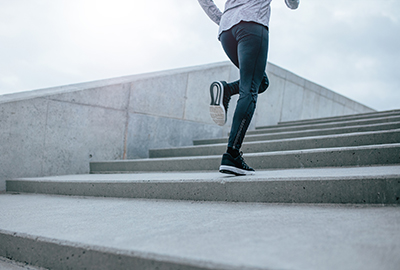
Acute and chronic foot & ankle sports injuries are common amongst people of all age groups and activity levels. It is also a common presentation of pro and semi-pro athletes and sports men and women. An accurate diagnosis of your sports injury will help you treat and prevent such injuries in the future.
Symptoms associated with sports injuries:
Most foot and ankle sports injuries are managed conservatively with ice, rest, braces, splints and air boots and you may return to normal activity levels within a few weeks. However, a thorough assessment by a foot & ankle specialist is vital to eliminate serious problems. We at the Foot Clinic provide a comprehensive management programme for foot and ankle care. This will include things like investigating your unique walking style and posture using video and 3D foot scanning technology. We can recognize foot and ankle problems as well as knee, hip and back alignment issues.
After the analysis, our clinicians may recommend a treatment plan that incorporates exercise, specialized injections into tissues and joints as well as bespoke prescription orthotics or sandals that would improve your alignment and gait during walking or running.
Hip problems
Common conditions affecting the hip include arthritis, sciatica, trochanteric bursitis and iliotibial band syndrome. Conditions such as this are caused by biomechanical imbalances readily identified at the Centre using in-depth biomechanical assessment and gait analysis.
One common reason for hip related symptoms is the presence of a leg length discrepancy. Treatment includes specialist orthoses and footwear modification.
Knee pain
The knee is very sensitive to biomechanical mal-alignment. Normal knee function relies on an efficient functional relationship between biomechanics of the foot and pelvis. When either of these are out, the knee will begin to function abnormally and so become prone to injury. It is important that patients undergo a biomechanical assessment and gait analysis to correctly determine the factors which are causing the condition so that effective treatment can be initiated.
A myriad of different treatments are used to effectively treat the knee including the correction of kinetic and kinematic imbalances using functional orthoses, rehabilitation, and core stability programmes.
Shin Splint
Shin pain is very common amongst athletes of all standards. The first step in the management is to obtain a diagnosis, as there are many types of shin pain. The most common form of shin pain encountered is known as medial tibial stress syndrome whereby the inside of the shin becomes tender due to inflammation between the junction of the muscles and bone. This condition is generally treated very effectively by means of biomechanical correction/foot orthotics and focused treatment plan.

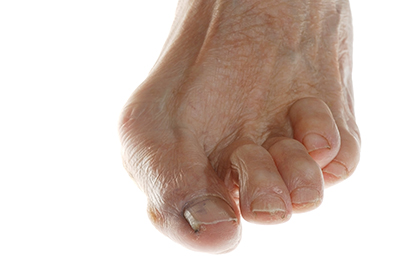
Foot and toe deformities are common problems that result from abnormal positioning of foot and ankle bones.
Bunions
A bunion is a deformity of the great toe joint where the 1st toe drifts towards the lesser toes. Usually, a prominent "bump" forms on the inside of the foot as a consequence of the joint becoming more prominent. Often, the smaller neighboring toes drift out of position and this is often an indication of when surgery should be considered to avoid the development of a more extensive forefoot deformity.
When the bunion presses on shoes, then the only solution is wider shoes or surgical correction. When pain arises within the great toe joint, then specialized devices, various types of injection and footwear modification can be undertaken.
Lesser Toe deformities
Toe deformities such as claw toes, hammer or mallet toes are common toe deformities seen in Podiatry clinics. Other conditions include overlapping toes, webbed toes and "cock up" toes. All of these deformities can be treated conservatively using such toe devices and reducing pain developed from corns and calluses.

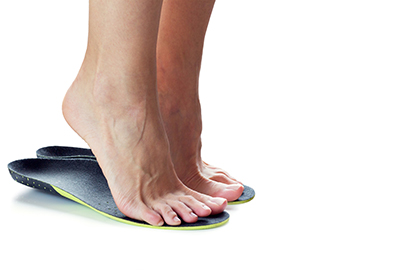
Gait analysis and foot orthoses to treat common foot problems such as Flat Feet, Sport injuries, Limb length discrepancies and other biomechanical abnormalities of the foot and ankle are available at our clinics.
Pronation is the natural inward roll of the foot as the outside part of the heel strikes the ground. This roll acts as a shock absorber for the leg and body, optimally distributing the force of the impact of the heel hitting the ground.
Gait analysis matches the degree of pronation with the correct shoe type, with the aims of counter-balancing over or under-pronation, helping reduce the risk of injury and improving running efficiency.
Orthotics are specialist Insoles or devices that provide structure support to improve foot posture.
The manufacture of bespoke orthotics is a highly technical process involving an accurate assessment by a podiatrist who specialises in biomechanics and gait analysis. The podiatrist must also understand the theory of tissue stress injury and the principles of reducing this through improving human gait.
At our Clinics you can expect the manufacture of high quality orthotics after an accurate and firm diagnosis and investigation process which involves a comprehensive biomechanical and gait assessments.

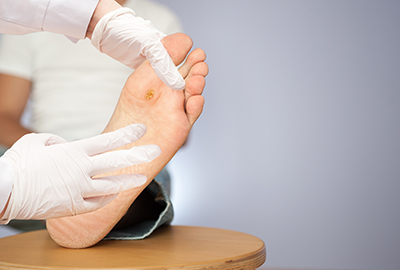
Verrucae or plantar warts are very common among children and adults.
Plantar warts can be painful affecting patient’s daily activities. Verruca treatment consists of planned programme using either chemicals or cryotherapy for destruction of the warts conservatively. Sometimes surgery is needed for large lesions. The exact type of the surgery depends on the nature, size and location of the verrucae.

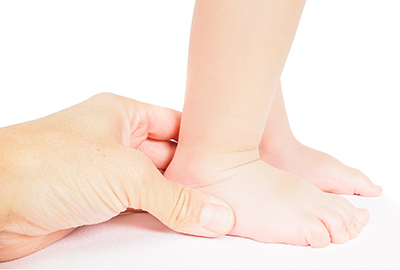
Flat feet, high arch feet and club feet.
Taking care of your child’s feet is very important for your child’s health. We at the Foot Clinic offer complete foot assessments for growing pain, flat feet, knock knees, sever’s disease, warts and ingrown toenails. Using advanced assessment methods and a holistic approach together with pressure platforms and video analysis we can help track your child’s development over time to prevent any complications to develop in the future.